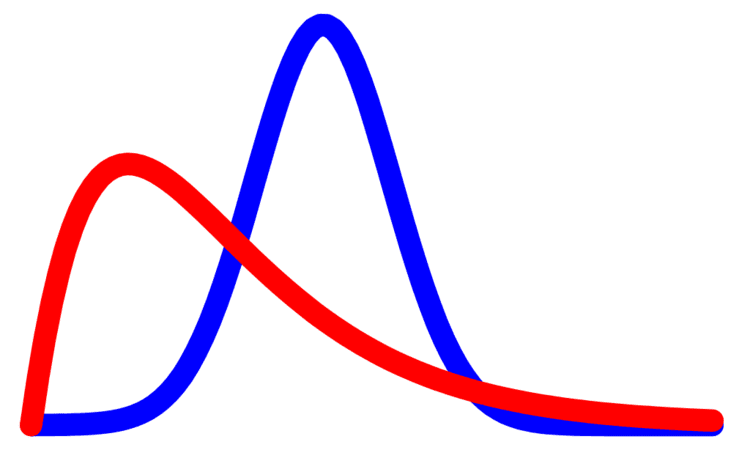 | ||
Similar Prediction interval, Tolerance interval, Confidence interval | ||
In Bayesian statistics, a credible interval is an interval in the domain of a Posterior probability distribution or predictive distribution used for interval estimation. The generalisation to multivariate problems is the credible region. Credible intervals are analogous to confidence intervals in frequentist statistics, although they differ on a philosophical basis; Bayesian intervals treat their bounds as fixed and the estimated parameter as a random variable, whereas frequentist confidence intervals treat their bounds as random variables and the parameter as a fixed value. Also, Bayesian credible intervals use (and indeed, require) knowledge of the situation-specific Prior distribution, while the frequentist confidence intervals do not.
Contents
For example, in an experiment that determines the uncertainty distribution of parameter
Choosing a credible interval
Credible intervals are not unique on a posterior distribution. Methods for defining a suitable credible interval include:
It is possible to frame the choice of a credible interval within decision theory and, in that context, an optimal interval will always be a highest probability density set.
Contrasts with confidence interval
A frequentist 95% confidence interval means that with a large number of repeated samples, 95% of such calculated confidence intervals would include the true value of the parameter. The probability that the parameter is inside the given interval (say, 35–45) is either 0 or 1 (the non-random unknown parameter is either there or not). In frequentist terms, the parameter is fixed (cannot be considered to have a distribution of possible values) and the confidence interval is random (as it depends on the random sample). Antelman (1997, p. 375) summarizes a [95%] confidence interval as "... one interval generated by a procedure that will give correct intervals 95% of the time".
In general, Bayesian credible intervals do not coincide with frequentist confidence intervals for two reasons:
For the case of a single parameter and data that can be summarised in a single sufficient statistic, it can be shown that the credible interval and the confidence interval will coincide if the unknown parameter is a location parameter (i.e. the forward probability function has the form
